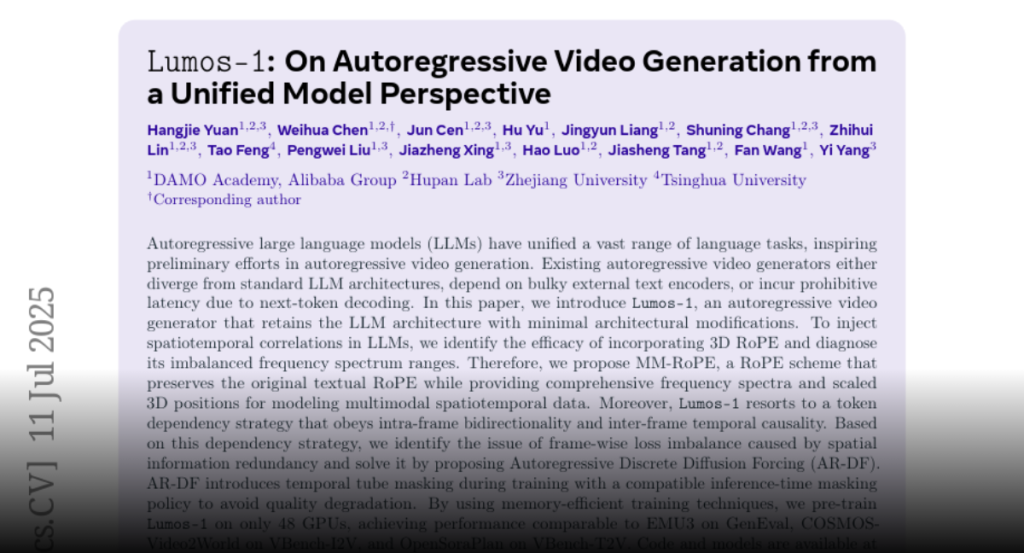Lumos-1 is an autoregressive video generator that uses a modified LLM architecture with MM-RoPE and AR-DF to address spatiotemporal correlation and frame-wise loss imbalance, achieving competitive performance with fewer resources.
Autoregressive large language models (LLMs) have unified a vast range of
language tasks, inspiring preliminary efforts in autoregressive video
generation. Existing autoregressive video generators either diverge from
standard LLM architectures, depend on bulky external text encoders, or incur
prohibitive latency due to next-token decoding. In this paper, we introduce
Lumos-1, an autoregressive video generator that retains the LLM architecture
with minimal architectural modifications. To inject spatiotemporal correlations
in LLMs, we identify the efficacy of incorporating 3D RoPE and diagnose its
imbalanced frequency spectrum ranges. Therefore, we propose MM-RoPE, a RoPE
scheme that preserves the original textual RoPE while providing comprehensive
frequency spectra and scaled 3D positions for modeling multimodal
spatiotemporal data. Moreover, Lumos-1 resorts to a token dependency strategy
that obeys intra-frame bidirectionality and inter-frame temporal causality.
Based on this dependency strategy, we identify the issue of frame-wise loss
imbalance caused by spatial information redundancy and solve it by proposing
Autoregressive Discrete Diffusion Forcing (AR-DF). AR-DF introduces temporal
tube masking during training with a compatible inference-time masking policy to
avoid quality degradation. By using memory-efficient training techniques, we
pre-train Lumos-1 on only 48 GPUs, achieving performance comparable to EMU3 on
GenEval, COSMOS-Video2World on VBench-I2V, and OpenSoraPlan on VBench-T2V. Code
and models are available at https://github.com/alibaba-damo-academy/Lumos.

